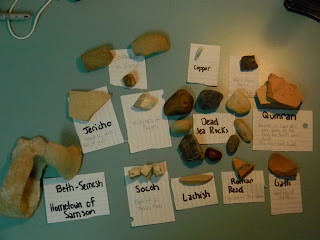On Wednesday March 23 a bomb was set off at the central bus station of Jerusalem. A man with a bomb was outside the bus and left a bad unattended. Within the bad was a bomb that exploded and damaged and hurt people in the back of a certain bus. That is something that you always watch for in Israel. Do not leave you bad unattended and be looking for those types of bags. The central bus station is where all the bus traffic of Jerusalem goes through. If you ride a bus into Jerusalem or within Jerusalem more than likely you will come through here at least once. We were there about 1 month ago when we had a free day to go to Jerusalem. We are no longer allowed to go into Jerusalem on these buses or into West Jerusalem were it also tends to be a volatile area. During this time we were no where near Jerusalem. We were up the coast for the day on a field trip. God's doing.
None of the terrorist groups have claimed this act, and in fact most of them have condoned it. This is a good sign because if it was the other way around things would be much more complicated. There was one 60 year old woman that died in the bus bombing. She was in the back of the bus and she died at a hospital after the bombing. She was from the moshav that we live on. This is a small community so almost everyone here knew her. We probably would recognize a face even. She is hear translating the bible. This is actually a neat story because in Israel Christians are not exactly the most loved people. We are by now means harmed by anyone or in any way demeaned, but due to the Jewish past with so-called Christians, Jews tend to dislike Christians and what they stand for. Here is a lady that gave up live in America to come learn about Jewish people, translate the bible, learn Hebrew, all while being a Christian. I hope that makes it on the the news. I doubt it will but i just might. She loved the Lord. I also pray that Jewish people see her and what she was doing here and what she stood for and question there ideas of Christians. Her death could possibly mean life for another.
You could pray for the other bible translators here as they figure out how to move on and continue with a missing link.
Through all of this we can see God's sovereign hand. Another way we can see it is that my teacher's boys go to school in Jerusalem. They ride the bus to and from Jerusalem everyday, and because it is the central bus station they go through it daily. This particular day their teacher let them out of school earlier so they called their mom to come get them. It turns out that the bus they ride is the one that got hit. God at work? I think so. They had friends on the bus. They usually all go straight to the back of the bus to sit but the bus was so crowded this day that the only seats they could find were in the front. The bomb affected the back of the bus but the people in front were not hurt at all. God at work? I think so.
This has caused me to think about were my trust is at. I look back to a few months ago when i was home, and i never thought once about a terrorist attack coming down on the bus station of Tehachapi California. We do not live this way, but in Israel you get a sense of what it means to be in God's hands. I am not saying that you cannot know this and trust in the Lord in the States, but for me this is what it caused me to do. I realize that my life isn't my own and that i am trusting in God for the next day. I cannot build my safety high enough so i live to be 100, because i do not control the things of life; God does. We are all in His hands, whether we want to be or not. Even in America we are just as much in God's hangs as those in Israel or Egypt of Iraq. This has caused that fact to be a little more real to me. God alone is in control.
Also in Gaza there has been some action. Gaza had fired 8 missiles into Israel about a week ago. Israel also had cut off a boat coming from Syria to Gaza loaded with weapons. Israel did put up with much from Gaza and went in with tanks. Since then Gaza has not done much. That is all pretty south of us. Are field trip to the south was just over when that started and we will not be back there. Next we are going north. I suppose this is the safest part of the country.
I wanted to fill everyone in on what is happened over here. Remember that we are safe and that God is in control. I am reminded of that constantly so would like to pass that on. Praise God for his sovereignty.
Ben and Chirstina


















































